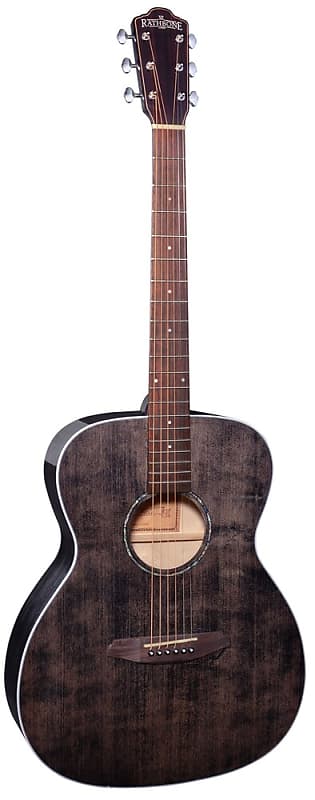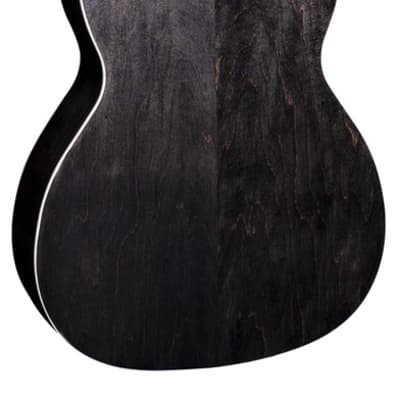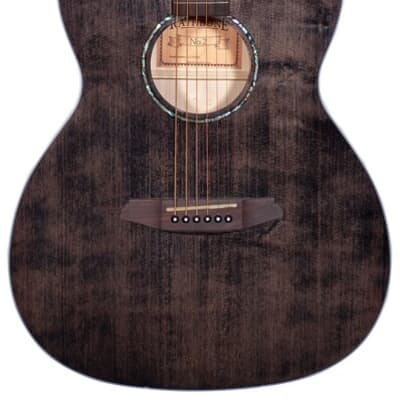



The Rathbone No.2 uses a now classic 'Orchestra Model' body shape. This beautiful body shape is said to have been originally created in an attempt to lure members of dance orchestras away from their banjos, toward greater projection of the steel-stringed guitar.
A bright and clear combination of tonewoods, the Rathbone R2SMPBKcombines Solid Spruce on the top with Maple on the back and sides. This pairing delivers a bright immediate tone with superb projection, Maple is a very dense wood, This makes it a good choice for live performance because the clarity of tone cuts through the mix well.
Due to the environment in which it was initially designed to be used, the 'OM' was not a large-bodied guitar. In fact, few of the early 'modern' guitars would be considered large today. So, the 'OM-sized' Rathbone No.2 is not a large bodied guitar either, but the neck joins the body at the 14th fret, so the scale length is one that we would recognise from most modern guitars. When first used, this 'long' scale length was found to help deliver a remarkably, and some may say disproportionately, powerful and dynamic tone. The tuned strings are under greater tension than on shorter scale guitars, so they give a far greater tonal response and 'punch'.
Top: Solid Sitka Spruce - Back & Sides: Maple - Scale: 25.5 / 650mm - Guitar Length: 41 / 1041mm - Neck: Mahogany - Fretboard: Rosewood - Bridge: Rosewood - Binding: Wood - Nut / Saddle: Bone (Nut 42mm) - Strings: Daddario EXP-16 - Machineheads: Open Geared Chrome - Finish: Gloss.
| Condition | Brand New (New) Brand New items are sold by an authorized dealer or original builder and include all original packaging.Learn more |
| Brand | |
| Model |
|
